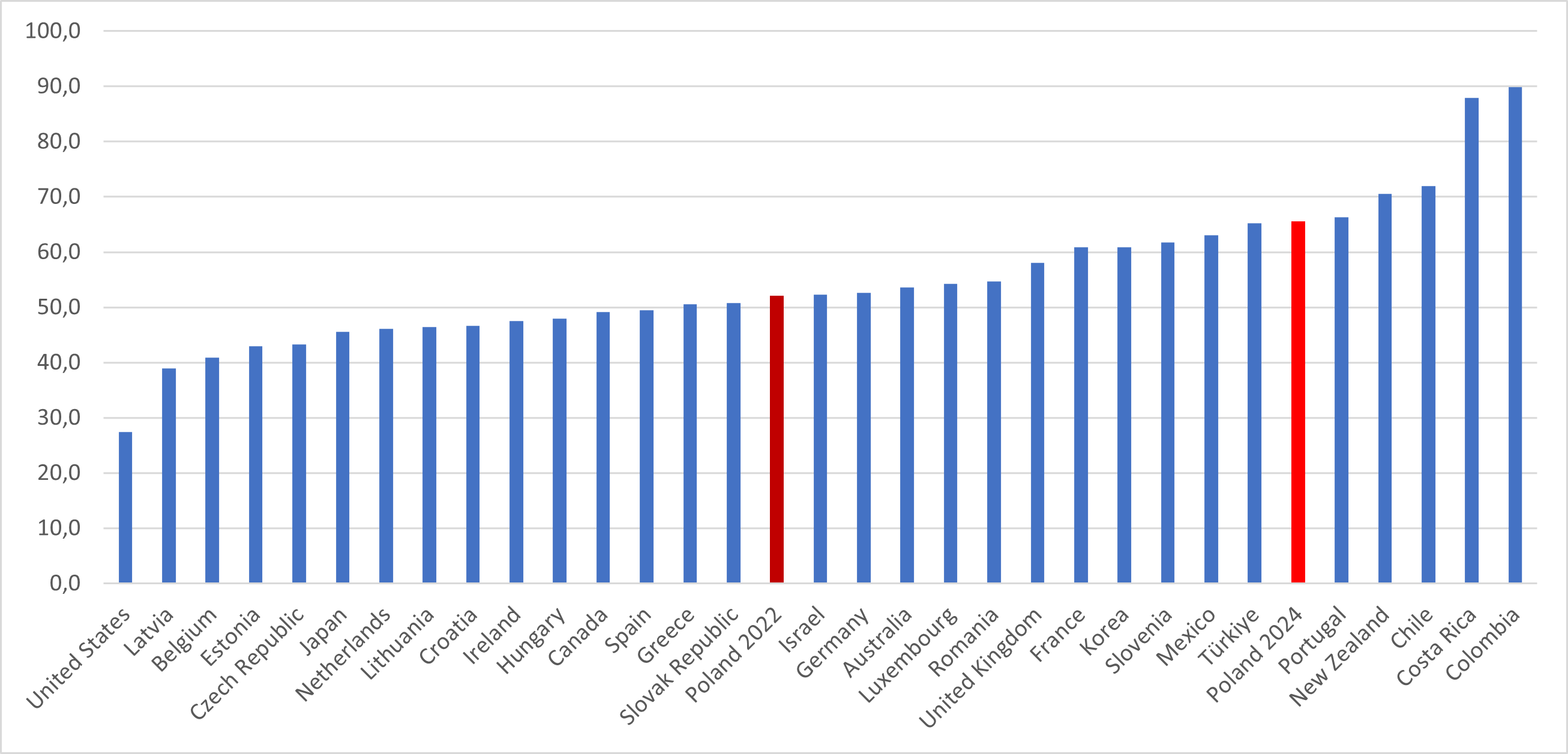FOR Communication 20/2023: Sharp increase of the minimum wage in Poland and its consequences
Synthesis:
- The Council of Ministers has decided to raise the minimum wage to 4242 zł gross from January 2024, and to 4300 zł from July.
- In relation to the average or median salary, the Polish minimum wage is already one of the highest in Europe. Despite this, it will increase again next year by more than one fifth.
- According to the Ministry of Labor and Social Policy, the projected cost of raising the minimum wage for employers will exceed 35 billion zł. This is almost as much as the annual cost of the "500+" program in recent years.
- The number of people receiving the minimum wage has been increasing in recent years. According to government forecasts, 3.6 million people are expected to be covered by the regulation. This is over one quarter of those employed in the national economy.
In recent years, the pace of minimum wage growth in Poland has accelerated. Over a span of five years, the nominal increase in the minimum wage has exceeded 15% YoY three times, a phenomenon not witnessed since 2008. This is partly due to inflation (especially last year's increase), but such high growth rates began earlier – already in 2020, the minimum wage rose by 16% YoY. Over years 2022–2024, the minimum wage in Poland will increase by almost 43% (with a forecasted growth of the average salary of just under 23% in the same period). Between 2010 and 2015, the growth of the minimum wage was 33%.
Looking at a five-year period, from 2019 to 2024, the Polish minimum wage would grow by 91%, with the average salary increasing by 58%. Naturally, this means that the minimum wage constitutes an increasingly larger proportion of the average salary. In 2006, the lowest salary was 36% of the national average; by 2015, it reached 45%, and next year – according to forecasts – it will be around 55% of the average salary. Among the OECD countries, the highest minimum wages in relation to the average wage are in Costa Rica, Colombia, Mexico, New Zealand, and Slovenia.
The minimum wage is also rising rapidly in relation to the median salary. In 2008, it represented 43% of the median, and in 2020, it already accounted for 55%. Next year, based on forecasts of the average salary and the historical relationship between median and average, it is expected to reach approximately 62–68% of the median salary. In this respect, we would also be among the top OECD countries, only behind Colombia, Costa Rica, Chile, New Zealand, and possibly Portugal, Turkey, and Mexico. On the opposite end are countries like the Netherlands, Japan, Czech Republic, Estonia, Belgium, Latvia, and the United States. In these countries (except for the US, where this ratio is considerably lower), the minimum wage is usually about 40–45% of the median salary.
Chart 1: Minimum wage as a percentage of median salary among OECD countries in 2022

Data: OECD and own forecast for Poland in 2024
In 2018, according to the Eurostat data, the minimum wage in Poland already constituted 57% of the median, ranking seventh among the 21 European Union countries with such regulations. This was before the period of most intense increases. France and Portugal reached the highest ratios - 66% and 64% of the median, respectively. Therefore, it can be expected that in 2024, Poland will be at the forefront of this ranking.
The full content of the publication can be found in the file to download below.
Contact to author:
Gabriel Hawryluk, FOR economist analyst
[email protected]
Files to download


